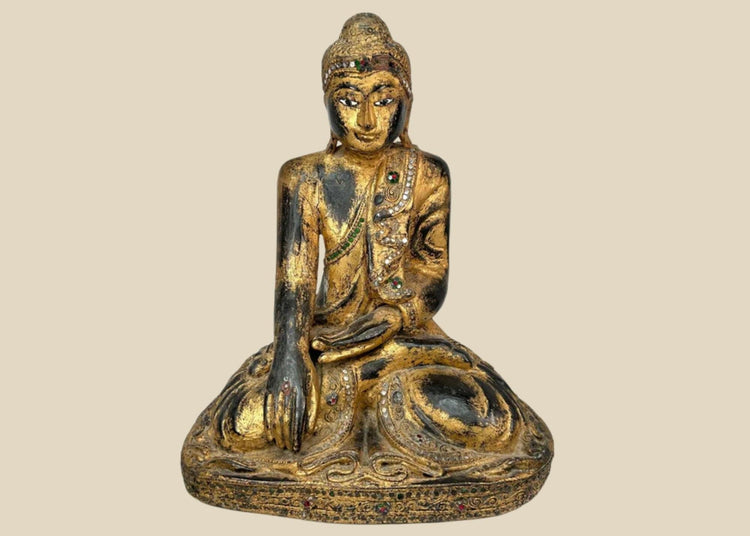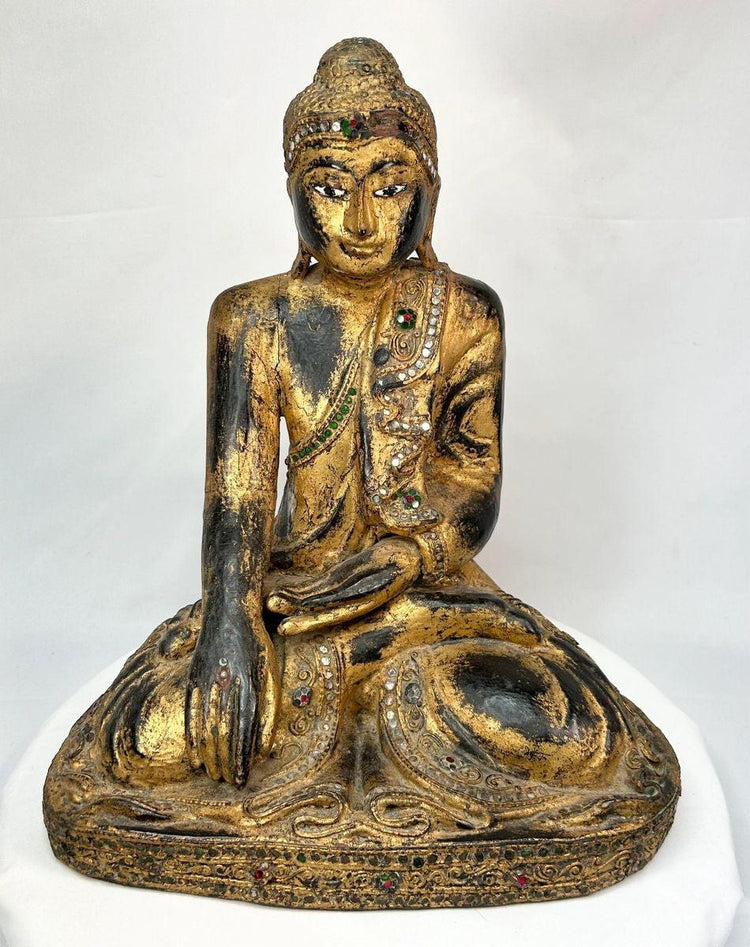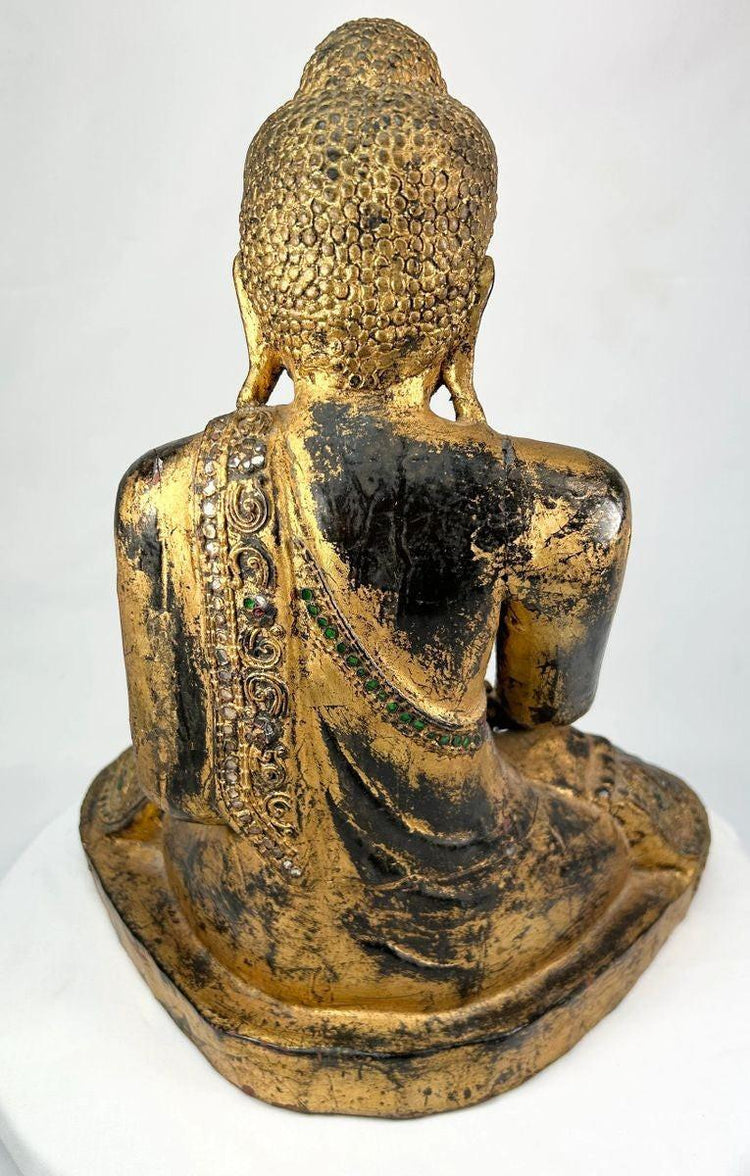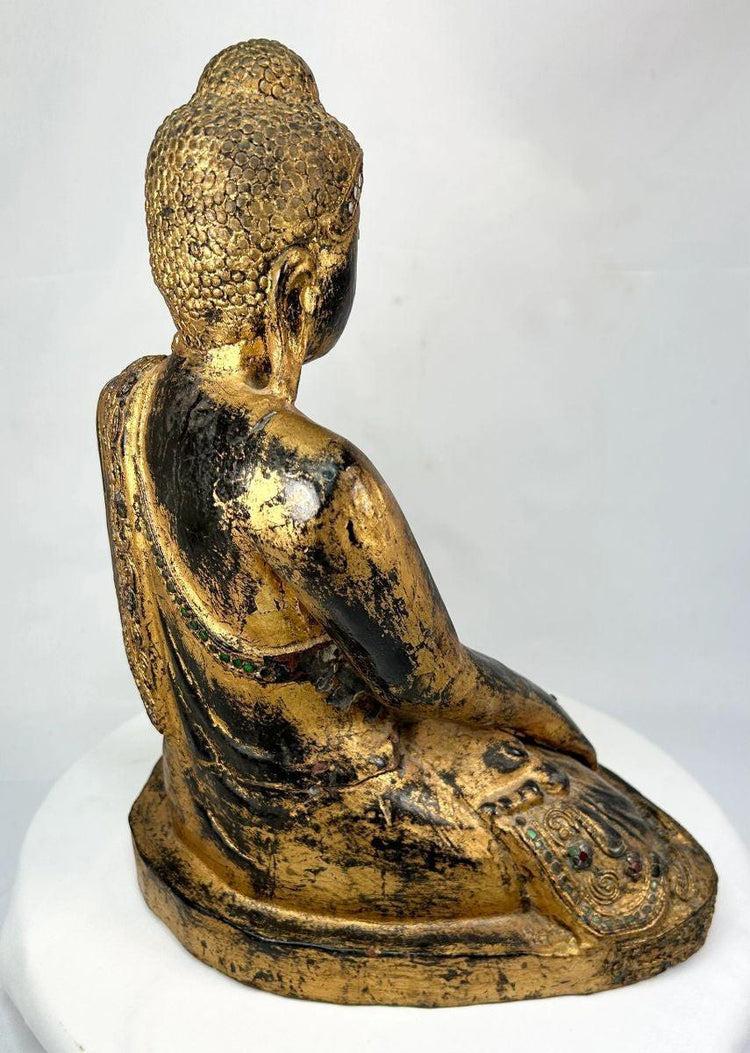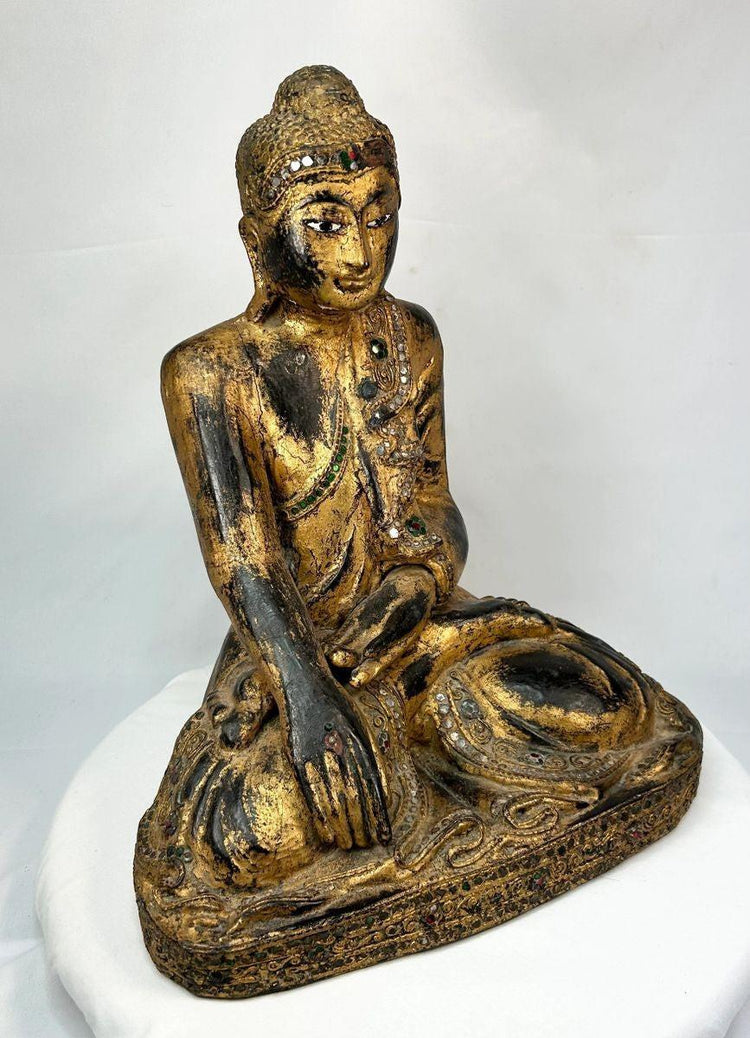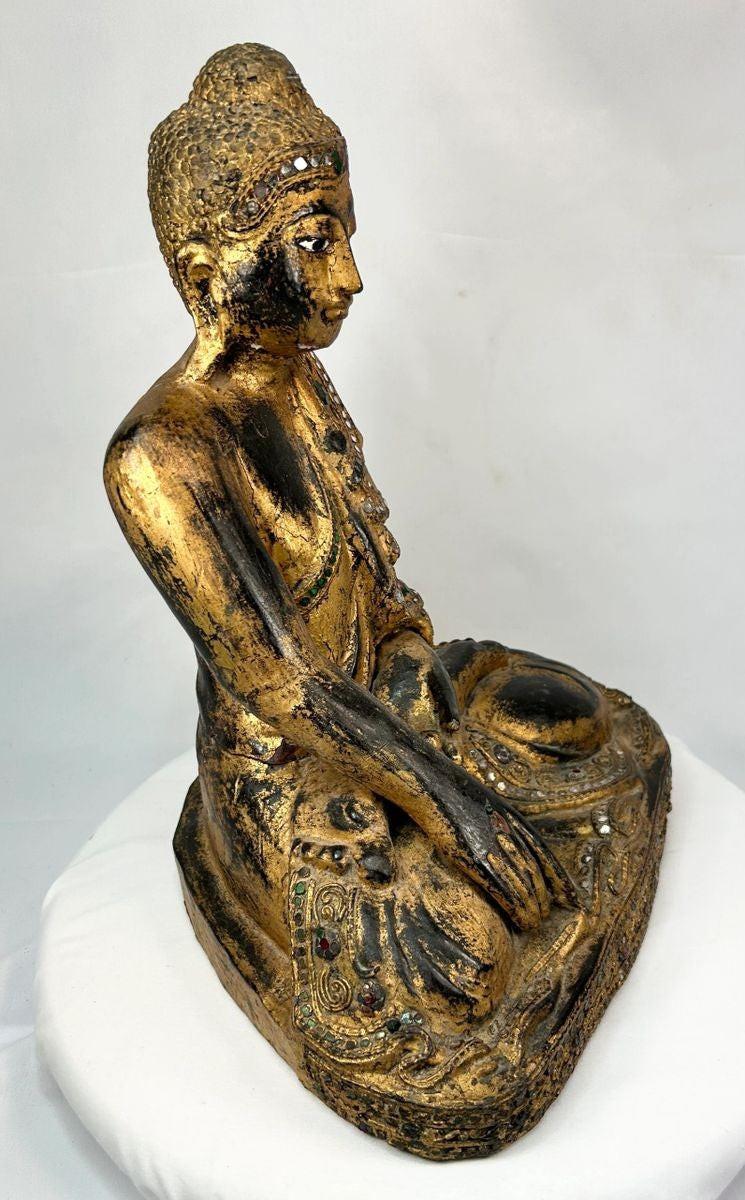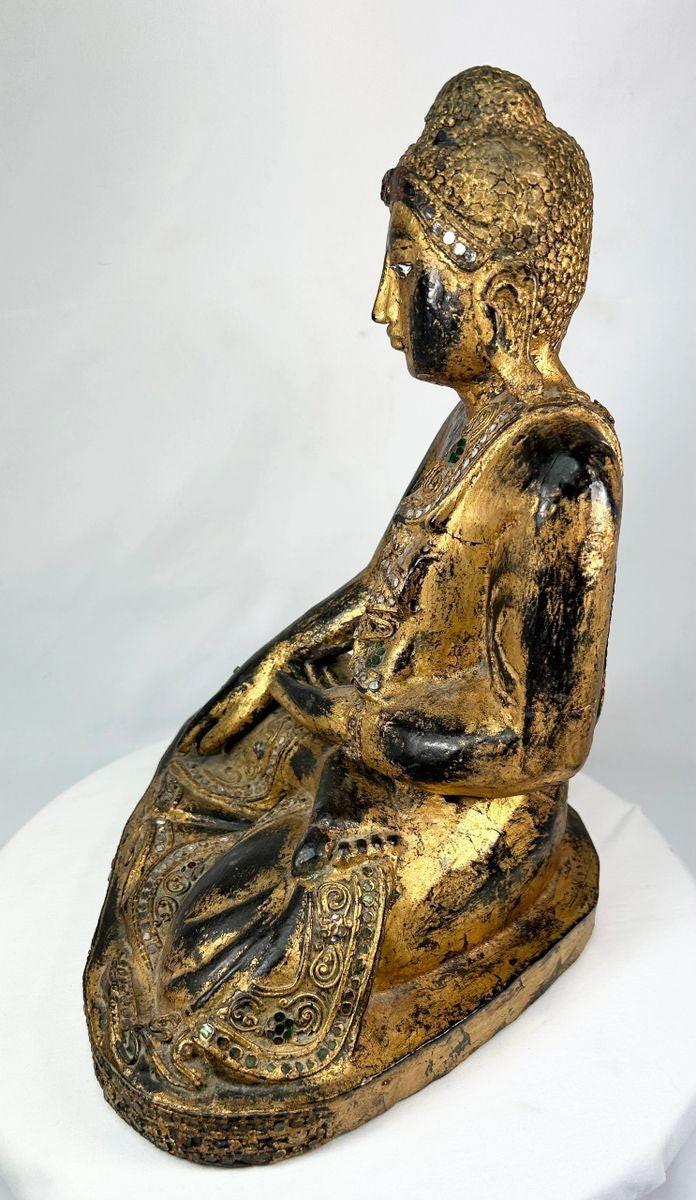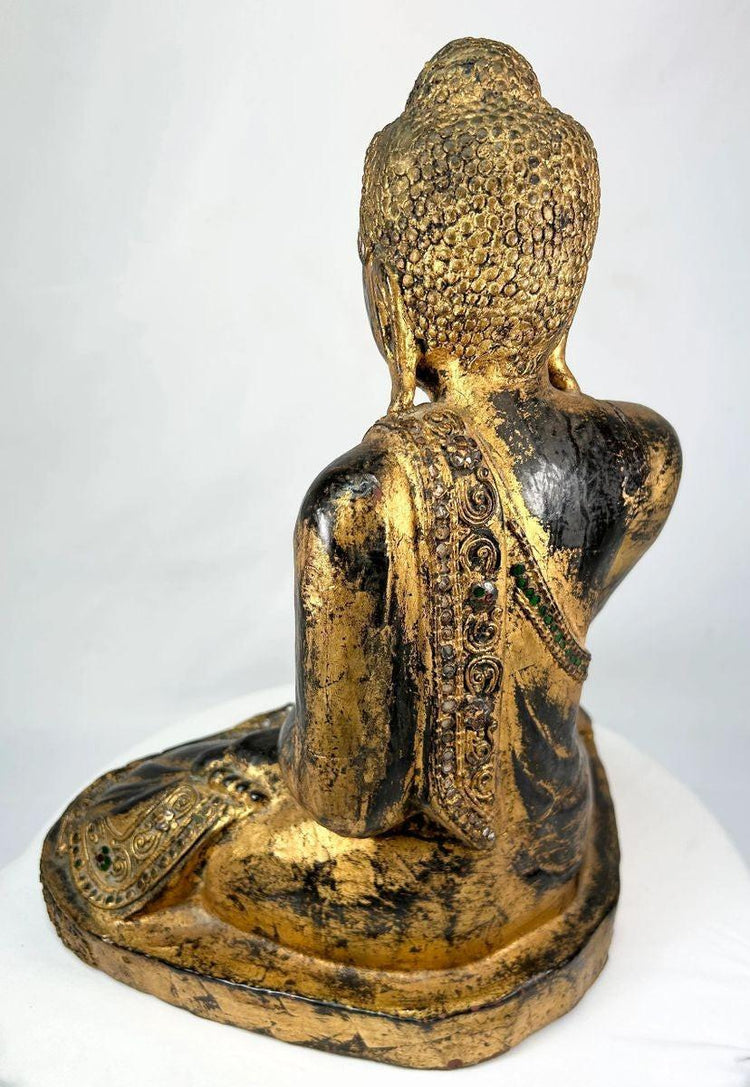Buddha in Bhumisparsha Mudra | Thai Gilt Wooden Figure with Gem Inlays | 19th–Early 20th Century
Description
More
Less
Historical Context & Origin
Region: Thailand
Material: Hand-carved wood with gilt paint and colored glass inlays
Period: 19th – early 20th Century
Description
This antique Thai gilt wooden Buddha statue represents one of the most recognizable forms of Southeast Asian Buddhist art. Hand-carved from wood and richly embellished with gold leaf and glass gem inlays, the figure radiates a timeless aura of peace and devotion.
Depicted in the Bhumisparsha Mudra (Earth-Touching Gesture), the Buddha calls the Earth to witness his enlightenment beneath the Bodhi tree. Every sculpted detail—from the elongated earlobes and ushnisha (crown of wisdom) to the serene facial expression—conveys enlightenment, compassion, and spiritual victory.
Acquired in Japan during a collector’s expedition in 1980, this sacred piece has since remained in private hands, preserved as both a work of art and an object of devotion.
Features
- Intricately carved seated Buddha in Bhumisparsha Mudra — symbolic of enlightenment
- Gold-gilt surface enhanced with red, green, and white glass inlays
- Serene facial features reflecting traditional Thai Buddhist iconography
- Original wood structure with authentic centuries-old patina
- Excellent example of Thai temple and monastic sculpture
Cultural Significance
In Thailand, Buddha statues serve as sacred focal points for meditation, reflection, and merit-making. This example embodies the ideals of tranquility, wisdom, and divine awakening, while showcasing the exceptional craftsmanship of 19th-century Thai artisans. Beyond its spiritual symbolism, it reflects a rich cultural heritage where artistry and faith were inseparable.
Condition
Structurally sound and well-preserved for its age, with expected wear to the gilt finish and pigments consistent with centuries of devotional use. The glass inlays remain largely intact, and the surface displays a beautiful aged patina that enhances its authenticity and value.
Dimensions (approximate)
Height: 14 in
Width: 12 in
Depth: 8.5 in
Age
Estimated at 100–200 years old
Learn More
Discover More About Buddha in Bhumisparsha Mudra at Original Buddhas: Bhumisparsha Mudra – The Earth Witness Gesture | Symbol of Buddha’s Enlightenment
Description
Historical Context & Origin
Region: Thailand
Material: Hand-carved wood with gilt paint and colored glass inlays
Period: 19th – early 20th Century
Description
This antique Thai gilt wooden Buddha statue represents one of the most recognizable forms of Southeast Asian Buddhist art. Hand-carved from wood and richly embellished with gold leaf and glass gem inlays, the figure radiates a timeless aura of peace and devotion.
Depicted in the Bhumisparsha Mudra (Earth-Touching Gesture), the Buddha calls the Earth to witness his enlightenment beneath the Bodhi tree. Every sculpted detail—from the elongated earlobes and ushnisha (crown of wisdom) to the serene facial expression—conveys enlightenment, compassion, and spiritual victory.
Acquired in Japan during a collector’s expedition in 1980, this sacred piece has since remained in private hands, preserved as both a work of art and an object of devotion.
Features
- Intricately carved seated Buddha in Bhumisparsha Mudra — symbolic of enlightenment
- Gold-gilt surface enhanced with red, green, and white glass inlays
- Serene facial features reflecting traditional Thai Buddhist iconography
- Original wood structure with authentic centuries-old patina
- Excellent example of Thai temple and monastic sculpture
Cultural Significance
In Thailand, Buddha statues serve as sacred focal points for meditation, reflection, and merit-making. This example embodies the ideals of tranquility, wisdom, and divine awakening, while showcasing the exceptional craftsmanship of 19th-century Thai artisans. Beyond its spiritual symbolism, it reflects a rich cultural heritage where artistry and faith were inseparable.
Condition
Structurally sound and well-preserved for its age, with expected wear to the gilt finish and pigments consistent with centuries of devotional use. The glass inlays remain largely intact, and the surface displays a beautiful aged patina that enhances its authenticity and value.
Dimensions (approximate)
Height: 14 in
Width: 12 in
Depth: 8.5 in
Age
Estimated at 100–200 years old
Learn More
Discover More About Buddha in Bhumisparsha Mudra at Original Buddhas: Bhumisparsha Mudra – The Earth Witness Gesture | Symbol of Buddha’s Enlightenment
You May Also Like


























